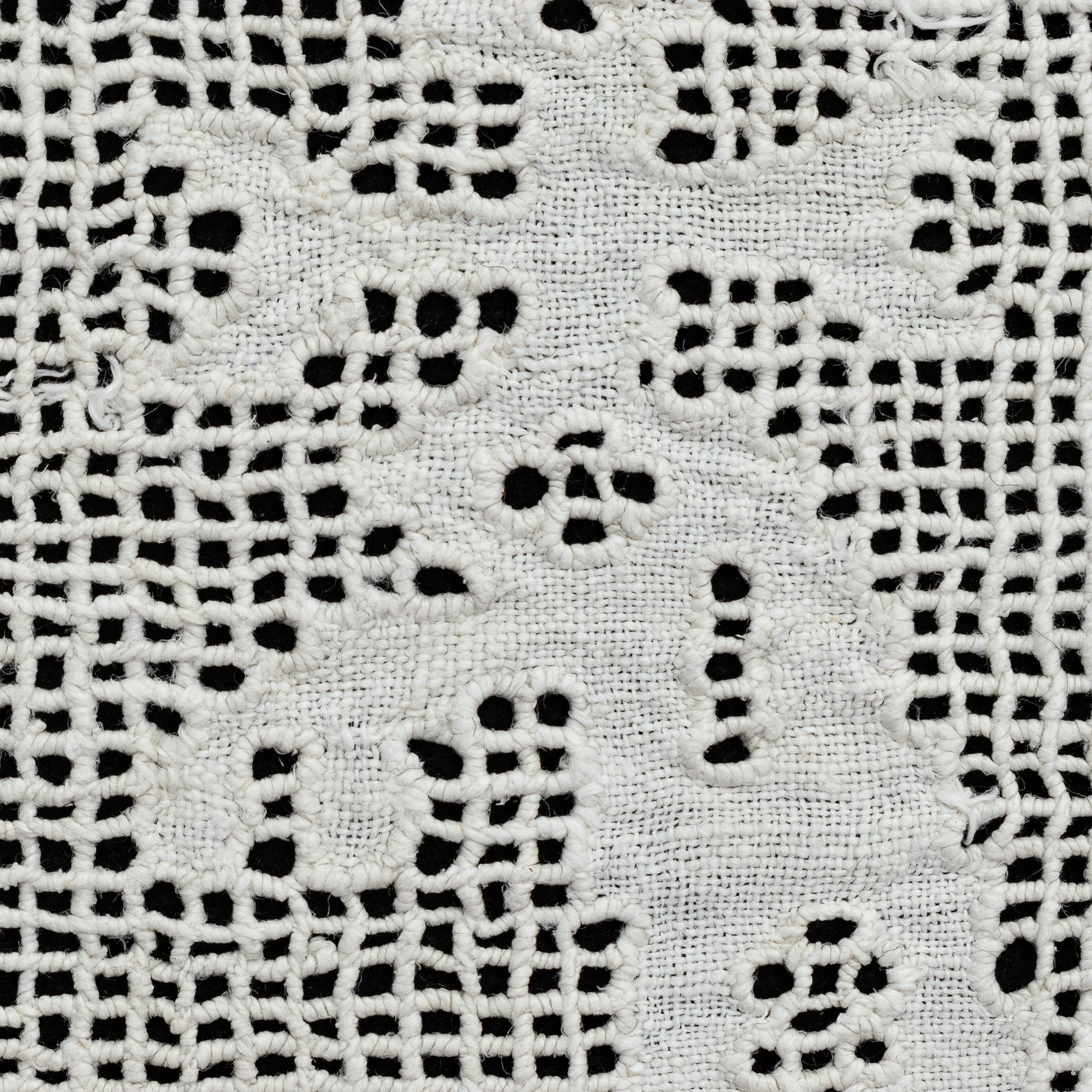An early 16th century linen panel of Punto Tirato, or Drawnwork, Italian, circa 1530-1550
REF: 4719
Worked in linen thread on a coarse linen ground, with a stylised design of stags alternating with urns issuing floral and foliate displays below birds and butterflies, mounted, museum glazed, framed, panel only dimensions: height 23.5cm, width 71cm
Historically cut from a longer panel, the cut edges rolled and secured with linen threads. The characteristic rigid, geometric quality of this type of work is dictated by the technique. Selected warp and weft threads are 'removed' from a woven linen to create an angular design. The design derives from the visual contrast between the reserves of linen ground and the worked areas of square shaped hard-knotted punto avorio stitches. It is indicative of an early Renaissance date, from the first few decades of the sixteenth century, before openwork of this kind evolved into the lighter, more open styles of reticello. In her essay 'Ragusa: The Mystery Spot in Lace-History' published in 'The Bulletin Of The Needle And Bobbin Club', Volume 10, Number 1, 1926, p.8, Margaret Taylor Johnstone gives an interesting overview of early Italian needlaces.
For examples of similar work see: The Cleveland Museum of Art, Cleveland, Ohio, USA, object no. 1920.1116; Powerhouse Collection, Powerhouse Museum, Sydney, Australia, object no. A9148-9; V&A Museum, London, acc. no. 49-1899
- Height 40 cm / 15 "
- Width 79 cm / 31 1⁄4"
- Depth 3.5 cm / 1 "
Category












